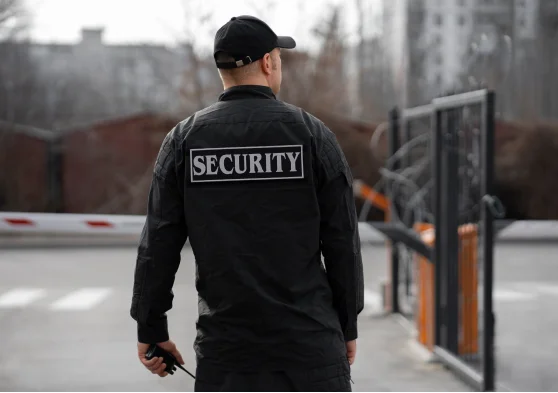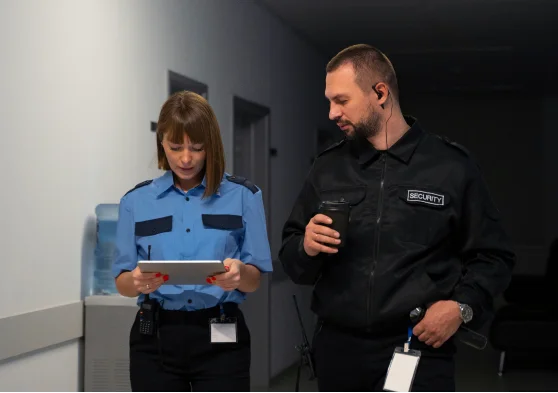Security in apartments and condominiums in New York City is a top priority, as both types of residential properties require robust security measures to protect the residents, their belongings, and the building itself. Due to the density and urban setting of New York, security can be a concern, but there are many systems and protocols in place to ensure safety.
Here’s an overview of the key security features and benefits in apartments and condominiums in New York:
- Controlled Access and Entry Systems
- Key Fob/Key Card Access: Most apartments and condominiums in New York use electronic key fobs or keycards that allow access to the building and individual units. These systems prevent unauthorized access and can be easily updated if a fob is lost or stolen.
- Intercom Systems: Residents can communicate with visitors before granting access. Many modern systems allow residents to remotely unlock doors or gates, which adds an extra layer of convenience and security.
- Gated Entrances: For some apartment buildings or condominiums, especially those in more upscale areas, there are gated entrances that restrict access to authorized individuals only.
- 24/7 Security Personnel
- Doormen and Security Guards: Many buildings in New York, particularly in high-end areas, employ doormen or security guards who monitor the entrances and the building’s interior. These security personnel ensure that only residents and approved visitors enter the premises.
- Patrols: Some buildings have security guards who regularly patrol the hallways, elevators, and public areas. This ensures there is an active presence that can deter criminal activity and respond quickly to any emergencies.
- Package Delivery Management: Doormen and security staff may also manage package deliveries, ensuring that packages are securely received and delivered to the correct resident without risk of theft.
- Surveillance and Monitoring
- CCTV Cameras: Surveillance cameras are commonly installed in the lobby, hallways, common areas, parking garages, and building perimeters. These cameras help monitor activities, prevent crime, and provide valuable evidence in case of incidents.
- Real-Time Monitoring: Many buildings have 24/7 surveillance, with security personnel or remote monitoring stations observing footage and responding to suspicious activity in real-time.
- Visitor Screening and Access Control
- Guest Registration: For extra security, some apartment and condominium buildings require residents to register their guests ahead of time. This allows building staff to verify the identity of visitors before they are allowed to enter.
- Visitor Badges: Once approved, guests may receive a visitor badge or pass that grants them access to the building for a limited time. This adds a layer of identification to ensure that everyone in the building is authorized.
- Remote Access Control: Many modern buildings offer remote access systems, where residents can approve entry for guests via smartphone apps or intercom systems, ensuring control over who enters the building.
- Building and Unit Safety
- Locked Common Areas: Common spaces like laundry rooms, mailrooms, gyms, and rooftop decks are often locked to prevent unauthorized access. Access to these areas is typically restricted to residents and authorized personnel.
- Unit Security: Security within individual units is also a priority. Many residents install high-quality locks, deadbolts, or even smart home security systems (e.g., doorbell cameras, security alarms) for additional peace of mind.
- Emergency Lighting and Exits: In compliance with New York City building codes, many apartments and condominiums have emergency lighting, well-marked fire exits, and alarm systems. These features are critical for ensuring safe evacuation in case of an emergency.
- Alarm and Notification Systems
- Fire and Carbon Monoxide Alarms: Smoke detectors and carbon monoxide detectors are required by law in apartments and condominiums to warn residents of potential dangers.
- Emergency Alerts: Some buildings have integrated emergency notification systems to alert residents of urgent situations, like fires, gas leaks, or even building evacuations.
- Parking Security
- Secured Parking Lots: Many apartments and condos in New York provide secured parking garages or designated parking areas that require an access code, key fob, or pass for entry.
- Surveillance in Parking Areas: CCTV cameras are often installed in parking lots, garages, and bike storage areas to monitor for theft or vandalism.
- Valet Parking: In higher-end buildings, valet services may be employed to manage the parking area and ensure vehicles are safely parked and monitored.
- Integrated Technology
- Smart Home Systems: Increasingly, apartments and condominiums are incorporating smart home technologies. This can include smart locks, doorbell cameras, alarm systems, and mobile apps that let residents monitor and control security features remotely.
- Building Management Apps: Some residential buildings in New York offer apps that allow residents to request maintenance, communicate with management, report security concerns, or view security footage. These apps streamline communication between residents and security personnel.
- Fire Safety and Evacuation Plans
- Sprinkler Systems: Many apartment and condominium buildings in New York are equipped with sprinkler systems, which can quickly control fires and minimize damage.
- Fire Drills and Evacuation Plans: Regular fire drills and detailed evacuation plans ensure that residents know what to do in case of an emergency. Security staff and building management play a key role in helping residents evacuate quickly and safely.
- Neighborhood Security
- Security Patrols in Surrounding Areas: In some neighborhoods, buildings coordinate with local law enforcement or private security companies to provide patrols in the surrounding area, creating a safer environment for residents.
- Neighborhood Watch Programs: Some buildings or residential complexes in New York may participate in neighborhood watch programs, where residents keep an eye out for unusual activity and report it to security or local authorities.
- Insurance and Liability
- Lower Insurance Premiums: The heightened security in New York apartment buildings and condominiums can lead to reduced insurance premiums for residents. Insurance companies typically offer discounts for buildings with well-established security measures.
- Liability Protection: The security measures in place also help reduce the liability for building owners or associations, ensuring that they are protected from claims related to theft, break-ins, or other safety concerns.

Benefits of Security in Apartments and Condominiums in NY:

- Reduced Risk of Crime: The combination of access control, surveillance, and on-site security helps reduce the risk of burglary, vandalism, and other criminal activities.
- Peace of Mind for Residents: Knowing that the building has 24/7 security measures in place offers residents peace of mind, especially in a busy and sometimes chaotic city like New York.
- Enhanced Property Value: Buildings with strong security measures tend to attract more potential buyers or renters and can command higher prices. Safety is one of the top priorities for many when choosing a place to live.
- Convenience and Control: Residents have greater control over their safety, whether through smart access systems, the ability to monitor security footage, or knowing that security staff is available to handle emergencies.
- Community Cohesion: The presence of security staff and well-maintained security systems creates a sense of community, where residents feel safer and more connected to one another.


In summary, security in apartments and condominiums in New York is essential for ensuring the safety and well-being of residents. With a combination of advanced access systems, surveillance, on-site security staff, and smart technologies, these buildings provide a secure living environment. Security features not only protect the property but also enhance residents’ quality of life by offering peace of mind and reducing the risk of criminal activity.
